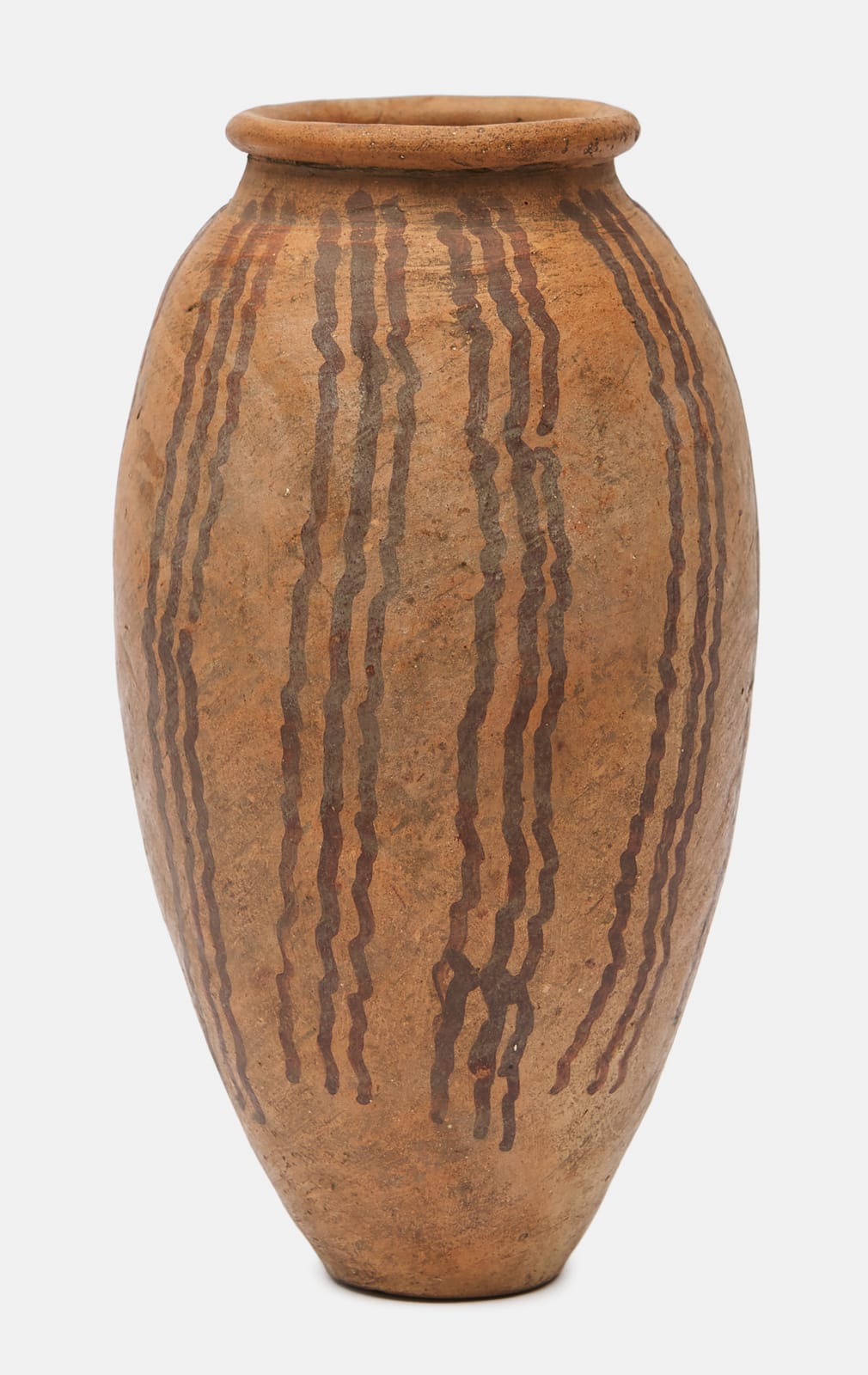-
Artworks

Anon
Egyptian Predynastic Pottery Jar, Naqada II period, c. 3600-3200 BCpainted terracotta9 1/2 x 5 1/4 x 5 1/4 in. | 24 x 13.5 x 13.5 cmThe periods of Predynastic Ancient Egypt (c. 6000–3150 BCE), prior to the ruling of the pharaohs, are named after the regions or cities in which ancient relics were discovered. The...The periods of Predynastic Ancient Egypt (c. 6000–3150 BCE), prior to the ruling of the pharaohs, are named after the regions or cities in which ancient relics were discovered. The Naqada period is named after the town of Naqada (c. 4400–3000 BCE), which translates as ‘Gold City’ and was further subdivided by British Egyptologist William Flinders Petrie, who named the Naqada II period after artifacts found at Gerzeh.
The present jar is tall and oval shaped with a flat base and a thick collared rim. It has been covered in an orange and pink slip which has been beautifully painted with vertical bands of wavy umber paint.